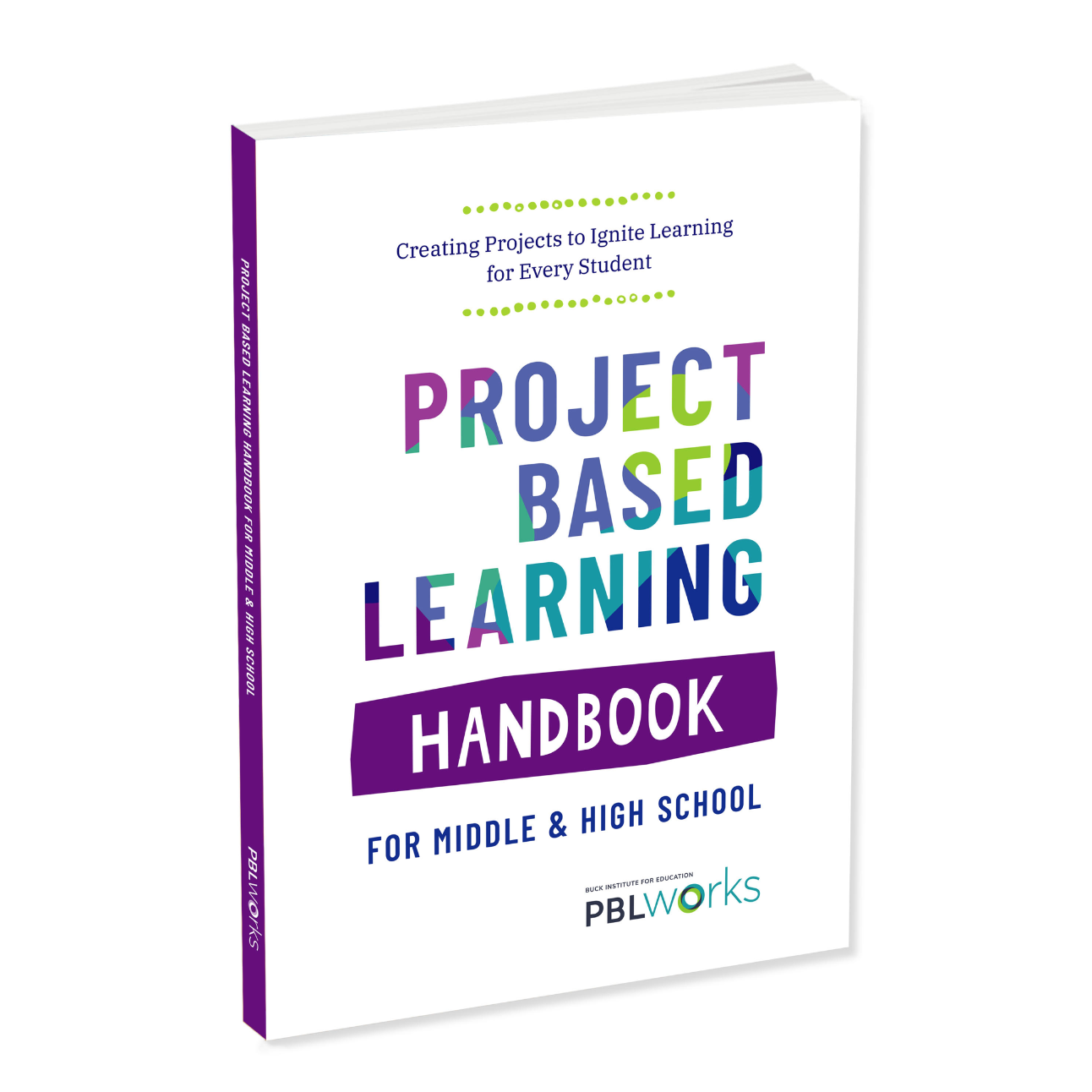Book Study Guide: PBL Handbook for Middle & High School
This study guide is designed to enhance your understanding and application of the book.
You can use the study guide after you have read PBL Handbook for Middle and High School — or as you read each chapter. The questions provided are not meant to cover all aspects of the book but rather to address specific ideas for further reflection. Many of the questions you can think about on your own, but consider pairing up with a colleague or forming a study group.
Introduction: An Overview of PBL
- On pages 8-9, which of the perspectives on PBL appeal to you?
- Have you experienced, seen, or done “dessert projects” in the past? How did they differ from “Gold Standard PBL”?
- Based on what you read on pages 17-19, reflect on the role of the teacher PBL. If you’re new to PBL, what might you need to learn or do to become a PBL teacher? If you’re a veteran PBL teacher, how have you grown into the role?
- Do you find the arguments for PBL as a force for educational equity on pages 19-23 persuasive? Do you have questions about how PBL can work for all students?
- Can you think of more ways to accomplish your goals for SEL by using PBL?
- If you’ve taught in a remote or blended learning setting, have you used PBL? What made it effective or challenging?
- Based on what you’ve read in the introduction, try writing a short (15-30 second) “elevator speech” explaining your answer to the question, “Why PBL?”
Chapter 1. Designing and Planning a Project
- As you read pages 35-36, did any ideas for projects come to mind?
- What types of projects on pages 36-38 appeal to you, or would be most effective for what you teach?
- Pages 43-45 discuss interdisciplinary projects. If you’re interested in planning this kind of project, how might you make it work effectively?
- What types of driving questions on pages 47-48 do you lean toward? Do you agree with the critique of the driving questions on page 49?
- What ways of making student work public on pages 52-54 appeal to you?
- Reflecting on this chapter, what are your takeaways? What new ideas did you get? What questions do you have?
Chapter 2. Aligning to Standards
- Which way to start designing a project would work best for you—starting from standards, or with an idea and mapping back to the standards?
- How does the suggestion to “Marie Condo Your Curriculum” sound to you? How easy will it be to teach certain standards in depth, and not “cover” as many as possible?
- Reflecting on this chapter, what are your takeaways? What new ideas did you get? What questions do you have?
Chapter 3. Building the Culture
- In what ways do you “build the culture” in your classroom? Is it compatible with PBL, or might you need to try some new strategies?
- Consider how you typically set norms or expectations. How might you give students more voice in the process?
- What beliefs and values do you hold about teaching and learning that you think are important for a PBL classroom?
- Reflecting on this chapter, what are your takeaways? What new ideas did you get? What questions do you have?
Chapter 4. Managing Activities
- How well set up is your classroom space for PBL? Could you make some changes (without spending much, if any money)?
- Pages 94-96 discuss several “management routines”—which ones do you already use? Which new routines might you try?
- This chapter has several “PBL Pro Tips”—which ones resonate with you?
- What has been your experience with “group work” in your teaching? What strategies and tips on pages 99-106 might you try?
- Have you seen equity issues arise when students work in teams, as discussed on pages 104-105? How do you handle them?
- Reflecting on this chapter, what are your takeaways? What new ideas did you get? What questions do you have?
Chapter 5. Assessing Student Learning
- Can you see a place for some traditional assessment practices in PBL? What new practices might you need to learn more about?
- Which of the formative assessment strategies on page 120 do you already use, and what new ones could you see using in PBL?
- The section on page 124-125 on “Individual vs. Team Assessment” and the PBL Pro Tip about grading in PBL address a common concern in PBL. How have you handled this issue in your practice?
- What has been your experience with rubrics? Did some of the advice on pages 126-127 resonate with you?
- Reflecting on this chapter, what are your takeaways? What new ideas did you get? What questions do you have?
Chapter 6. Scaffolding Student Learning
- This chapter offers several strategies for scaffolding various aspects of a project. In what areas might your students especially need support?
- Page 136 talks about scaffolding PBL for students with special needs. Do you have further questions? (If you’re interested in learning more about this topic, read more on special education and PBL at the PBLWorks.org blog.)
- Reflecting on this chapter, what are your takeaways? What new ideas did you get? What questions do you have?
Chapter 7. Engaging and Coaching Students
- What type of entry event for a project appeals to you?
- In addition to what is described on page 147-149, have you used other strategies for generating student questions, and revisiting them during a unit or project?
- How comfortable and competent do you think you are with the role of “teacher as coach? In what ways might you need to grow?
- Reflecting on this chapter, what are your takeaways? What new ideas did you get? What questions do you have?

